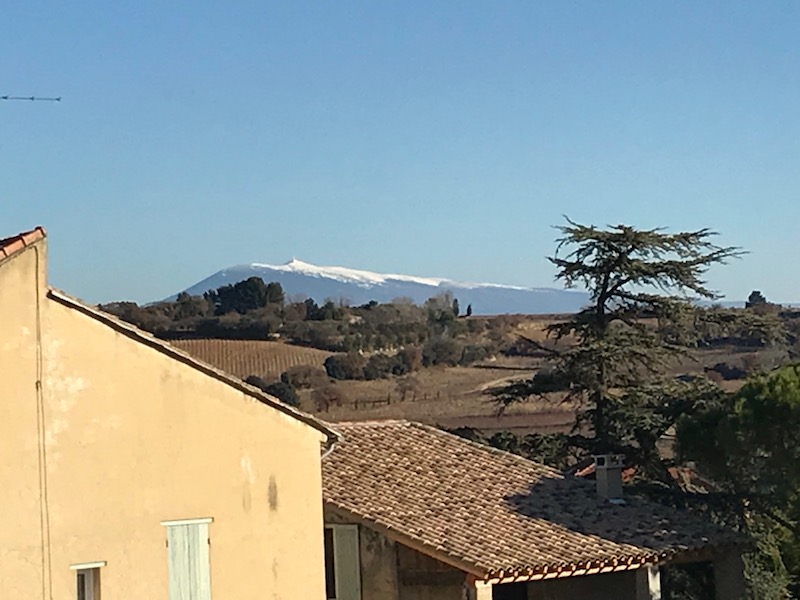Our Blog - Birthday dinner at Maison Pic
Growing up, I always hated having my birthday near Christmas, since I felt it got lost in all of the goings-on of the holidays. So as an adult, I always want to try to make the birthday special in some way. And, interestingly enough, Tom's birthday is one day before mine, and so we celebrate together. So instead of doing two somewhat special things, we can done one REALLY special thing.
This was our first birthdays since retiring to France and so we had many, many options on what to do that would be special. We decided to go to dinner at a restaurant with an interesting "link" to us. When we lived in China, I took cooking classes from a French chef named Chef Franck-Elie Laloum (who now is the executive sous chef at the Ritz Carlton in Tokyo). He had told us that he had worked for a little over a year (back in 2010-2011) at a restaurant in Valence, which is a Michelin 3-star restaurant. So ... we decided to go there to try it ... yes ... it is a pretty weak link, but a link nonetheless.
Valence itself is the capital of the the Drôme department, and it is about a 4 1/2 hour drive from Toulouse (if you pay the toll). It dates back to 121 BC and quickly became a very important crossroad for the Romans. Mind you .. you won't see really any pictures of Valence as we were really there only for the restaurant. Maison Pic was established in 1889 (yes, that is NOT a typo!) by the great grandfather of the current chef, Anne-Sophie Pic. In 1939, it was awarded its' first 3-star rating by Michelin, although it lost the 2nd and 3rd stars in 1946 and 1950. Anne-Sophie's father won back the 2nd and 3rd stars in 1959 and 1973, only to lose the 3rd star again in 1995. In 1997, Anne-Sophie took over the restaurant (her father passed away in 1992) and regained the 3rd star in 2007. Tom reads a food blog that says that Maison Pic is (literally) one of the best restaurants in the world.
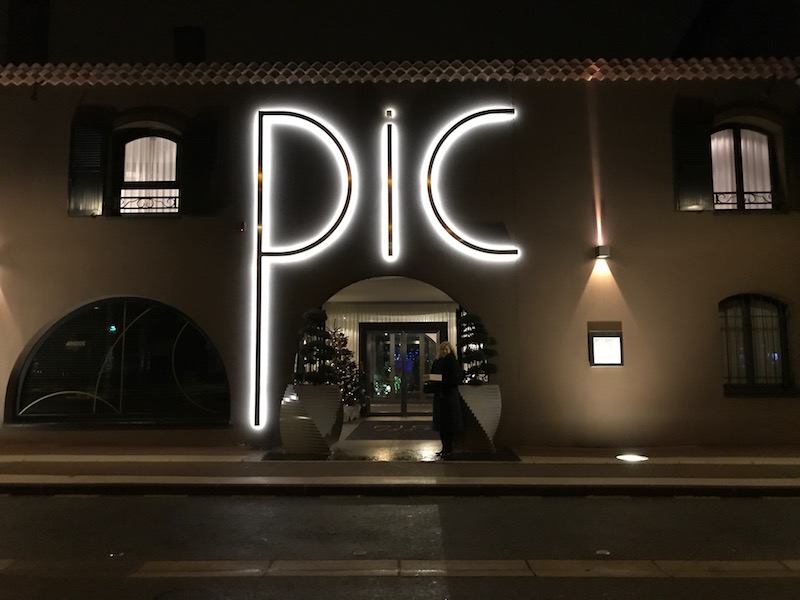

As you go in, you are walked through multiple rooms, including several that have memorabilia from the Pic family. They also have a case that contains a copy of EVERY Michelin guide published, starting back at 1900 and ending in 2016 (2017 has not yet come out). If you look at the 1900 one, the front says "Offert gracieusement aux Chauffeurs" ... graciously offered to drivers ... this is how Michelin guides started, they were restaurant recommendations for drivers. In 1900, there were fewer than 3,000 cars on the roads of France. To boost the demand for cars and, accordingly, car tires, car tire manufacturers Édouard and André Michelin published the first edition of a guide for French motorists. This first edition provided useful information to motorists, such as maps, tire repair and replacement instructions, car mechanics listings, hotels, and gas stations throughout France. They began to award stars for fine dining establishments in 1926.

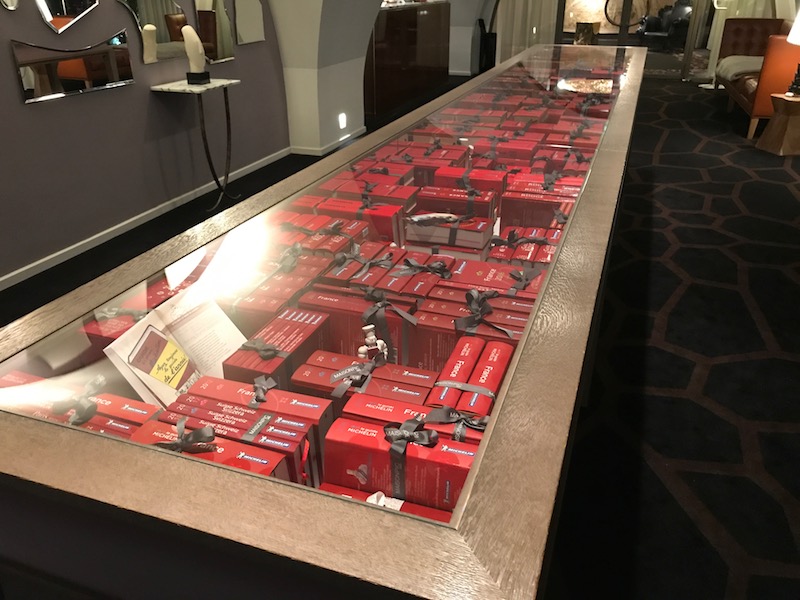
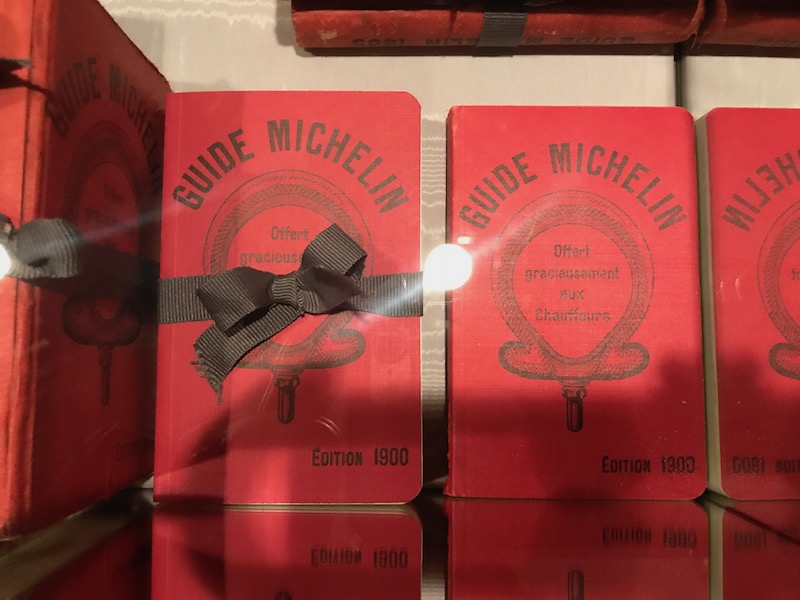
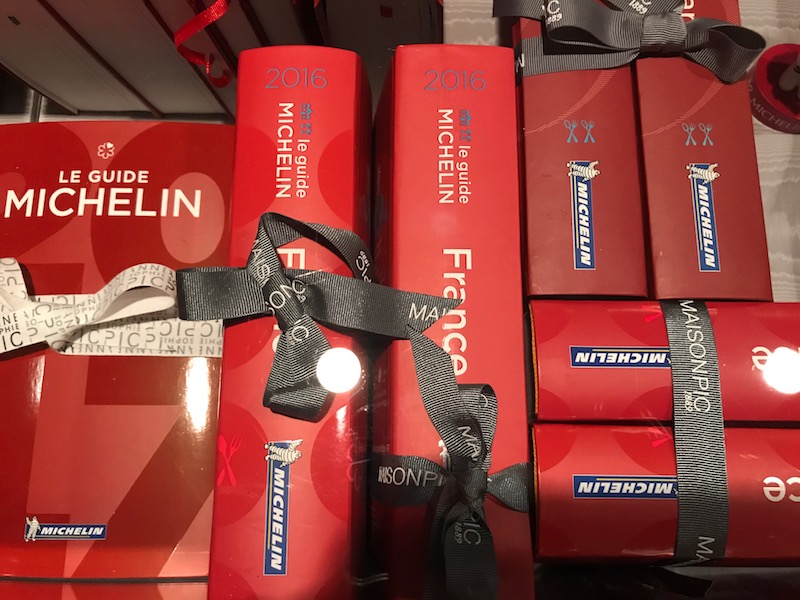
The dining room itself was well-appointed with the tables being quite a bit more separated than we are used to. We had the table all the way in the back (the grey section at the middle-back of the first photo) and so we had a great view of the entire dining room.
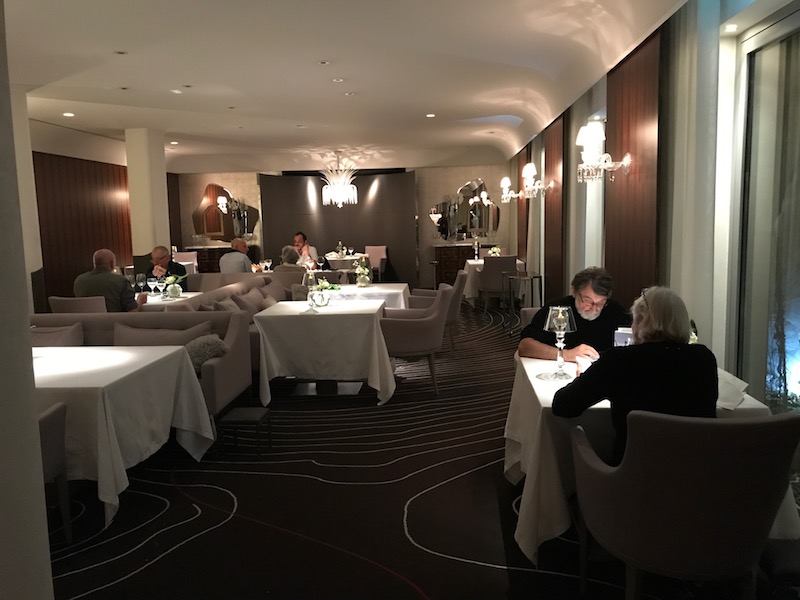
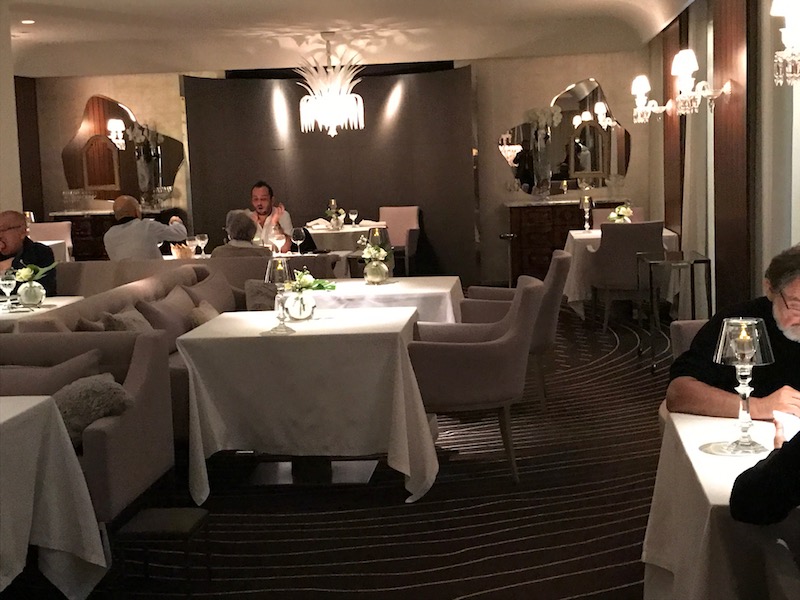
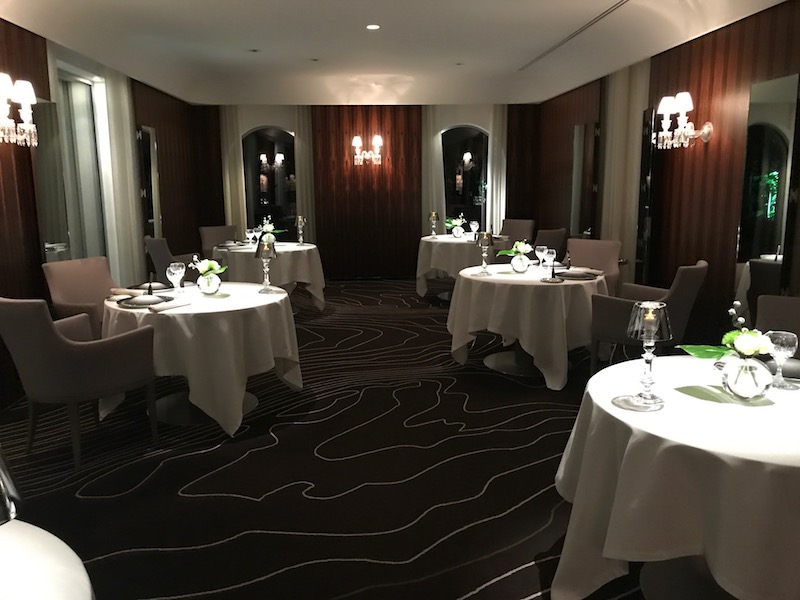

They also had this interesting "Art cake" on the bar, which was pretty impressive.
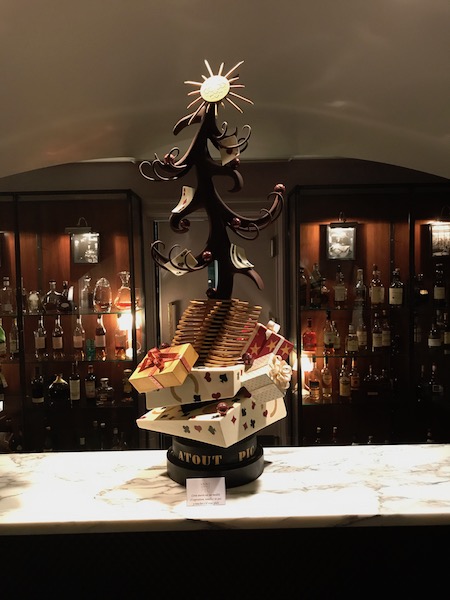
You can always tell when you are at a 3-star restaurant .. they have a small stool for the ladies purse ... you can't have an expensive handbag sitting on the floor!

We started out with an apero ... a kir. Somewhat "normal", but they are normally pretty good and so, sometimes it is good to start the meal with something that you know well.
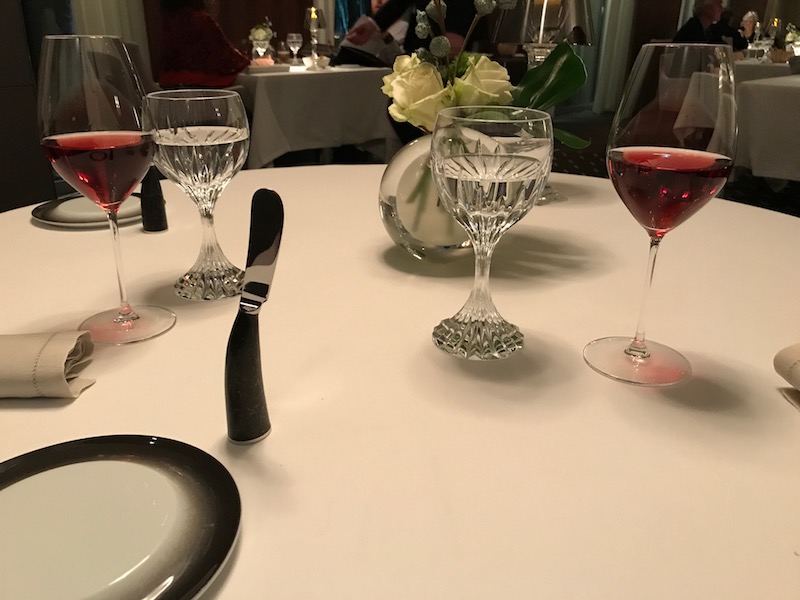
The menu will take a bit of introduction. Here it is, closed with a little bow. When you open it, you have several things. First, a page which explains the set menus (there are 3). There is a set of menu items and each menu contains a subset of the items, with each progressive menu (going up in price) having more than the previous. In a couple cases, you have a choice of 2 or 3 items, all which are explained on a single page. Then each menu item has a page, like the one we show here as an example, which is for an Oyster course. These are all in French, but it goes through and explains the dish ... including at the top what the inspiration for the dish was ... why the flavors that she put together are there ... what she was thinking about when she came up with the dish ... and then explains what is within the dish. I'll translate one page later with the dish. They gave us a pocket-sized version of it with just the items we ordered.
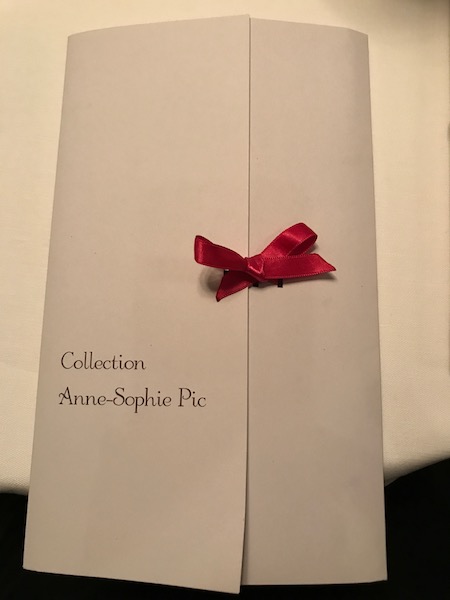
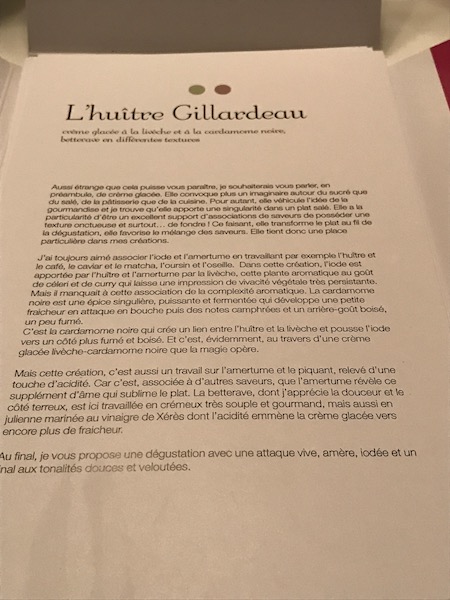
The meal began with a trio of nibbles. I didn't write down specifically what each of these was, but there was one that was a peanut marshmallow and the green balls had a liquid inside :-) The small items in the 2nd picture are little mushroom tarts and the last one, well, it was the most interesting. Each of the "leaves" were edible and were put into something brown which seemed edible (they were stuck a little on the bottom of the leaves) but not something you actually "eat" (no silverware was given).
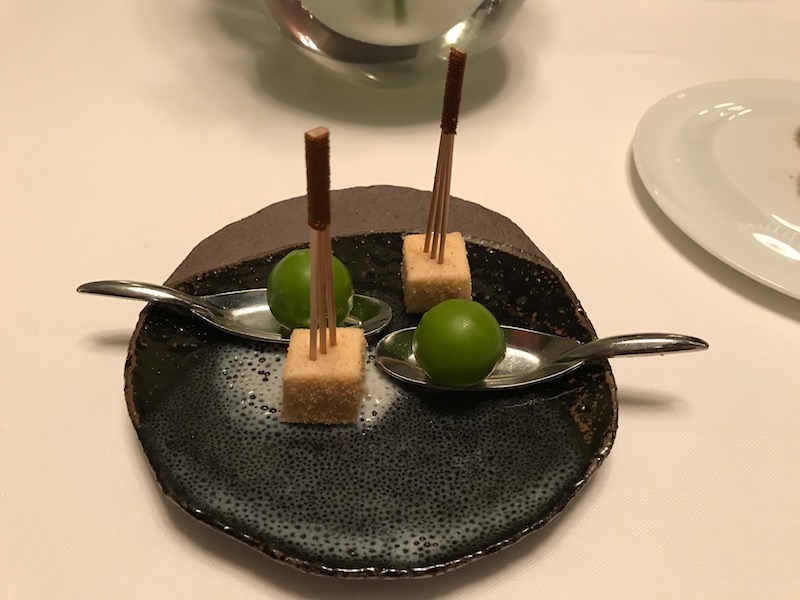
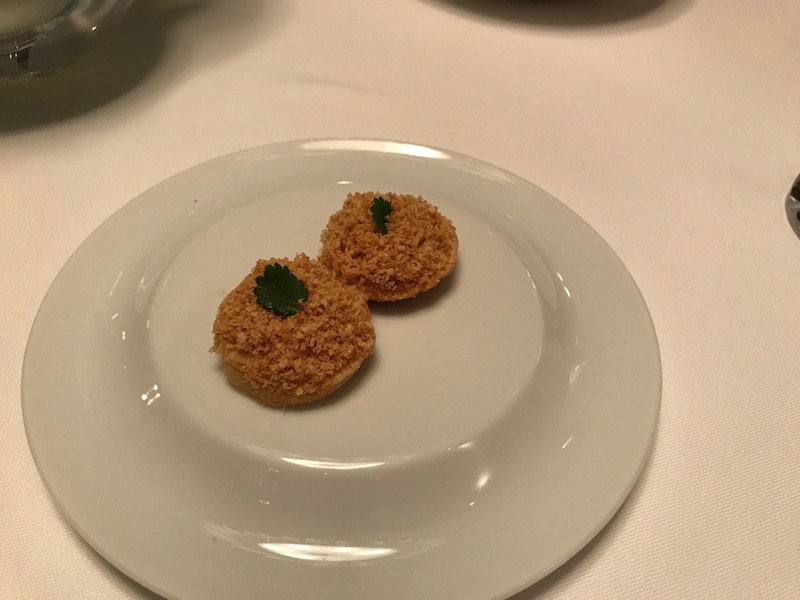
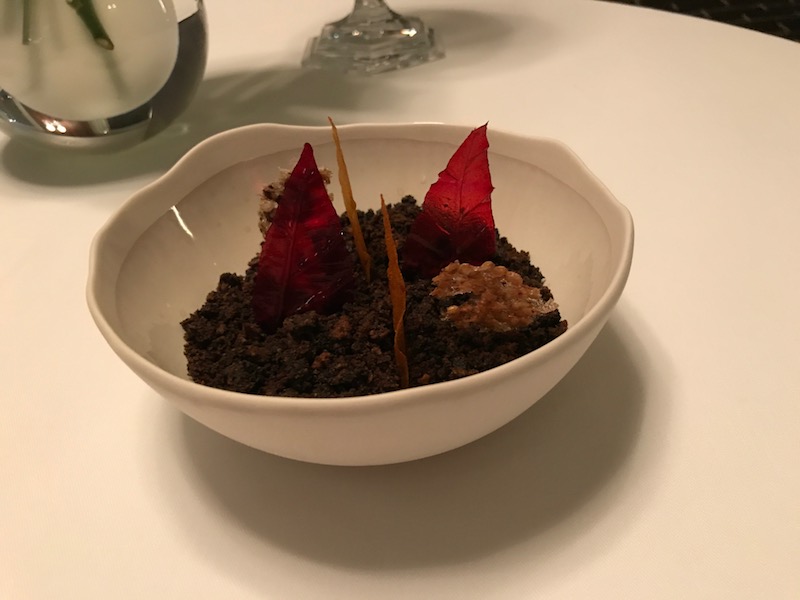
I realize most people don't take pictures of the bread and butter, but I made an exception here. There were 4 types of bread: traditional baguette, a buckwheat and orange baguette, slices of a bread that had nuts in it, and then one that, well, I also don't remember what the 4th was. As you can see, it was an infused butter that is made (like everything else) in-house.
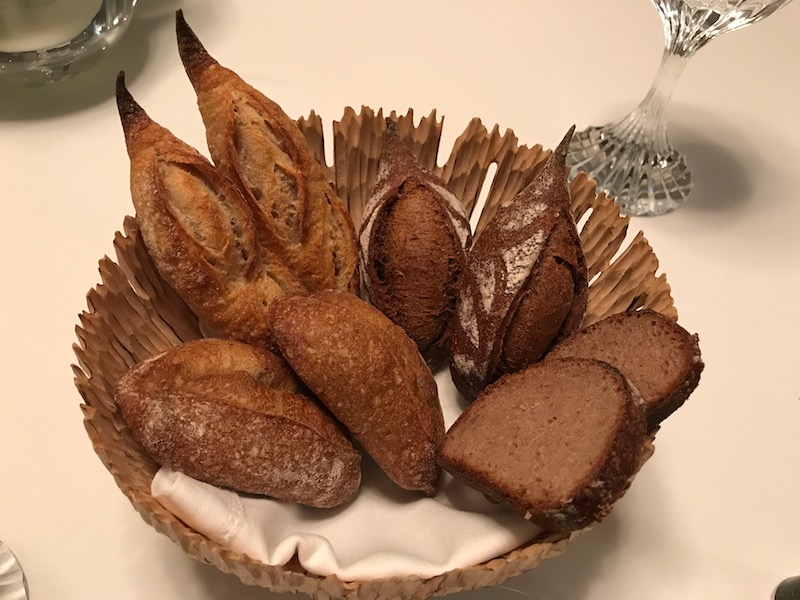

The amuse bouche was a carrot mousse topped with a jasmine-infused yogurt and then thin cornets of 4 different-colored carrots.
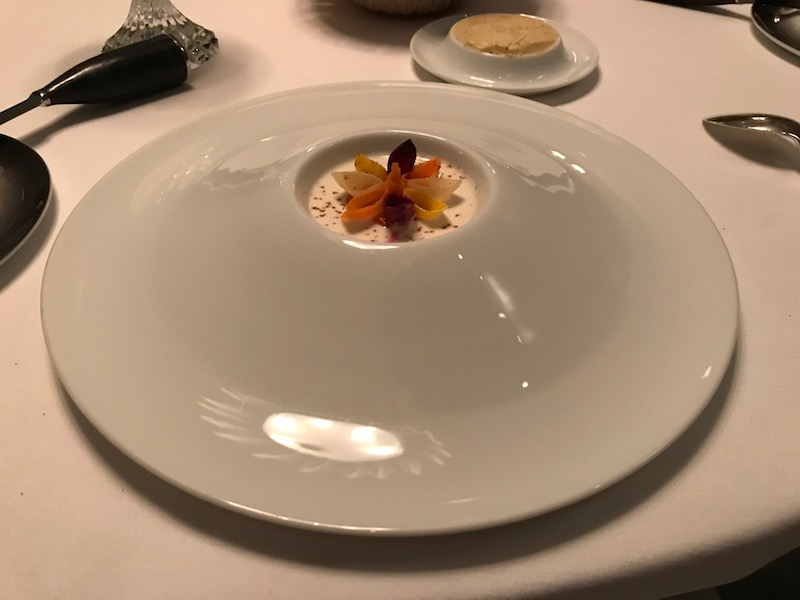
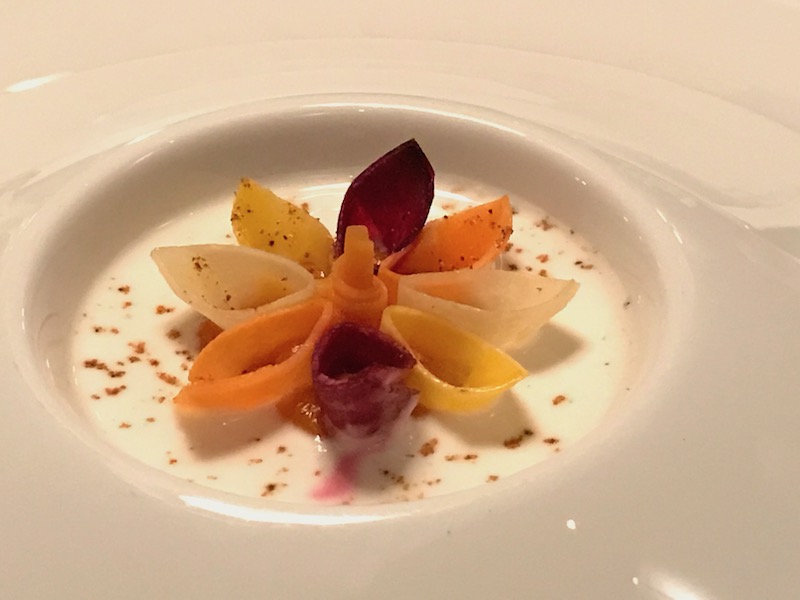
For the wine, the sommelier brought us the "book", which offers around 800 different wines. There was no way we were going to do a good job at picking, so we asked for him to make a recommendation based on our selected main courses as well as a price range. He chose a white, which he felt would go best with everything except the squab that I had selected, and recommended a separate single glass of red to go with that course. Sounded good to us!


The first actual course on the menu was a Gillardeau oyster, ice cream with lovage and black cardamom, along with beetroot in different textures. To start, the Gillardeau oyster come from France’s famed fourth-generation oyster dynasty. The oysters are raised in either Normandy or County Cork, Ireland for their first two years, then finished in the salt ponds of Marenne-Oleron. They are so prized that the Gillardeaus recently began laser-engraving their shells to prevent rampant worldwide counterfeiting. We were actually in the market this morning and noticed that one of the poissonieres had these Gillardeau oysters. Next, for those of you who have never heard of lovage (I hadn't, so I had to look it up), it is an herb with a flavor and smell can be described as a mix of celery and parsley, but with a higher intensity of both of those flavors. So here you can see the oyster, and then the green ice cream (lovage and black cardamom) and then the red is a beet cream topped with little julienne pieces of beet (that is the different textures part).
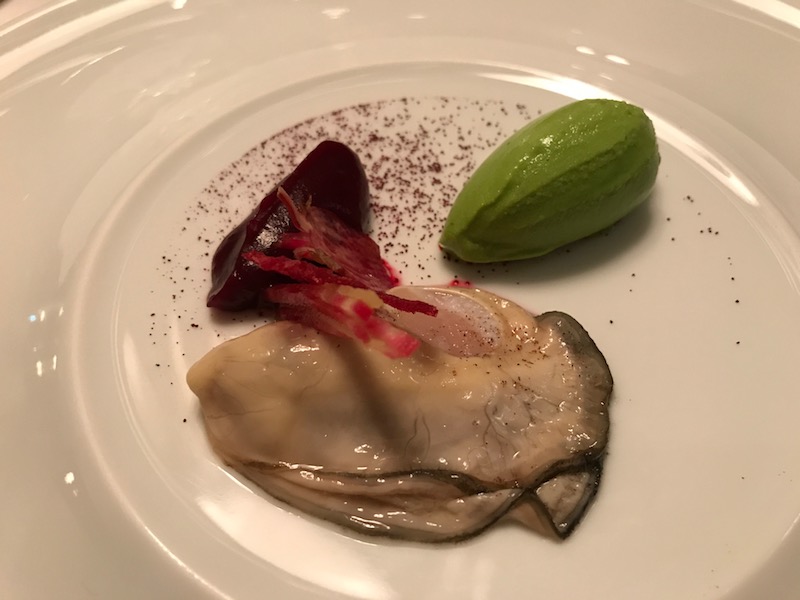
Next course were Berlingots. The name, berlingot, come from the pyramid-shaped boiled sweets that were a memorable part of the chef/owner Anne-Sophie Pic’s childhood. Here, she creates small green parcels of pasta containing a warm filling of smoked Banon goat cheese. I hadn't heard of Banon goat cheese, but it is a small round cheese that date back to Roman times. It comes from the dry, arid pastures that surround the town of Banon in the Haute Provence. After a period of two weeks allowing the cheese to mature, it is dipped in eau-de-vie and then wrapped in a chestnut leaf. Eau-de-vie literally translates to "water of life" and is colorless fruit brandy. Over these little green triangles, the server pours a thin consommé of a light green watercress sauce infused with ginger and bergamot.
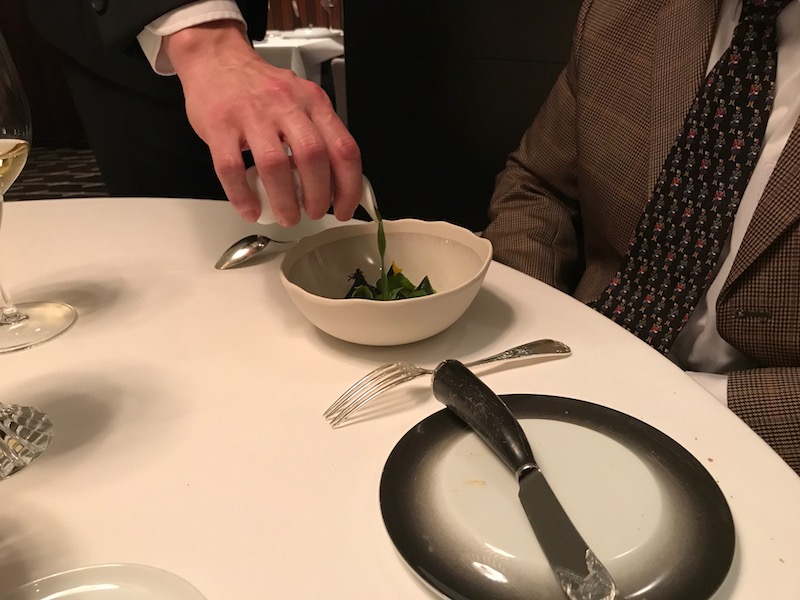

Normandy scallops with a light broth made of Granny Smith apple, green anise, celery, and cinnamon leaf. The scallops are cooked and then placed on top of celery. At the table, the broth is poured in.


Another seafood course, this one John Dory (Saint-Pierre), which is cooked and then sliced. It is plated with abalone from Brittany, and grilled leeks. The sauce (again added on top at the table) is a dashi with Rosat geranium, Namibian sage, and lemon balm.


So here I will insert the actual description of the course you just saw, so that you can get an appreciation of the type of thought process that seems to go on in the mind of Anne-Sophie Pic in creating a dish. I've translated it from French to English, as well as I could, although I admit not to be fluent! Here it is: Abalone is a shellfish that takes its name from the Latin 'Auris Maris', literally sea ear, because of its oval shape. Its unique and firm texture with a beautiful note and its delicately iodized taste with nutty notes make it an incredible and sought-after dish.
There is no need to introduce the Saint-Pierre, this fish has the delicate and translucent flesh that I love to cook "meunière style" (Susan note: this means to dredge it in flour prior to cooking). I had the idea to combine these two types of seafood in a single dish for their complementarity in terms of taste and texture, sweetness and crunchiness. I find that abalone gives aromatic amplitude to the fish.
This dish is built around the sauce and fits into my work on dashi broths. I really like this basic Japanese cuisine, a mixture of Kombu seaweed and dried bonito (Susan note: Kombu seaweed is known as "the king of seaweed"). It is in a way an infusion of iodine, of a great purity which can be flavored and thus allows a great aromatic complexity. What I look for in the sauces that I create is that they have relief, reveal different tones as the tasting grows. I like sauces whose expression is very broad. I chose to flavor this dashi with Nama sage, a sage that develops notes of both menthol and camphor, eucalyptus and linden. I wanted a herbaceous sauce, very vegetal and, at the same time, gourmet. What I like about dashi is the 'umami', this fifth flavor that could be described as enrobing, tasty, appetizing.
I put this dashi with a Rosat geranium-lemon balm-sage butter because the butter is a great flavor enhancer and provides a more round sauce. I love the Rosat geranium-sage combination because geranium is embalmed with the camphor of the sage. The lemon balm, meanwhile, brings a nice lemony persistence and pushes the vegetable freshness of the sauce.
The abalone is gently massaged until the flesh relaxes, it is then cooked meunière style in a Kombu seaweed butter and then carved very thinly. It is accompanied by grilled young leeks. The choice of leeks is not insignificant because they bring a soft note almost earthy, a slight pungent bitterness that elevates the aromatic complexity of this dish.
whew ... there you go .. the thoughts from the chef on creating a single dish!
This next course, we had a choice of two different dishes, both with poultry. Tom picked a roasted poulette (a "chick"), served with an assortment of turnips and then with a cream sauce consisting of Japanese sake, green shiso, and verbena. I picked the Squab, lightly smoked and roasted breast side down (along with a little leg as well). There were little dollops of a green cream topped with a sliver of radish, and some greens in the middle. The sauce that is poured over is an infusion of Madagascan vanilla, roasted barley, scented woodruff, and Phu Quoc pepper.

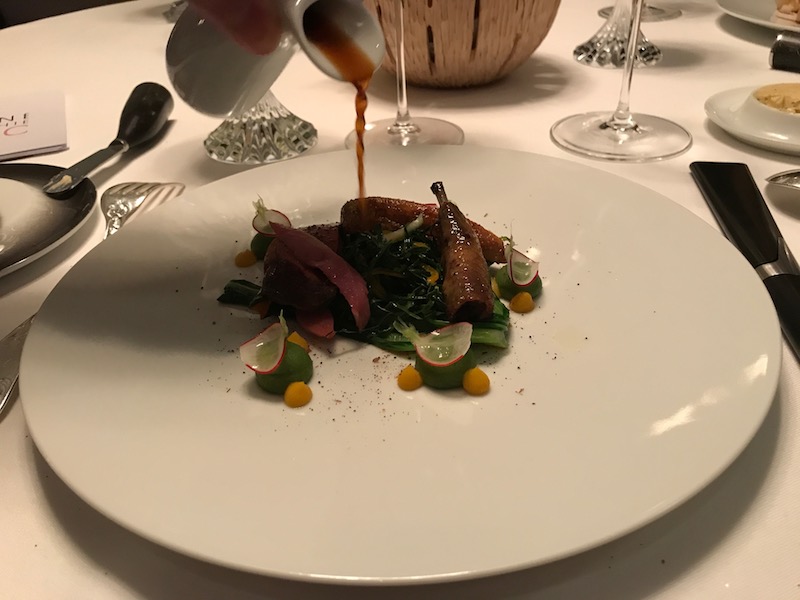
We made sure that we got the cheese cart, which came with this additional plate. It is a cream made of Brie (the cheese) from an area in France called Meaux along with a bourbon vanilla.

Not the best picture of the guy, but this is the cheese cart, which had a variety of different cheese that we could choose from. We picked 4 different cheeses each. Tom really liked the Comte and the Roquefort, while the epoisse was good but really strong (like a good epoisse should be). I had the other blue cheese, although it was quite a bit more mild than the Roquefort.
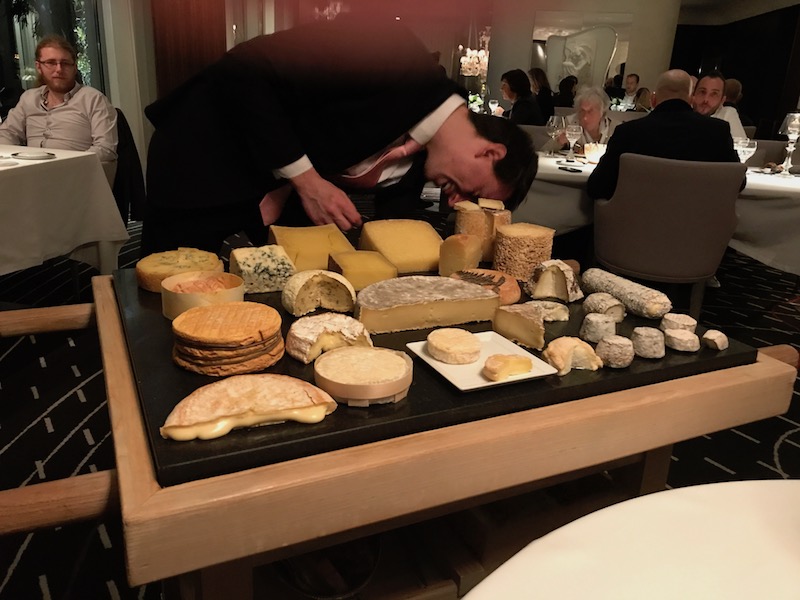
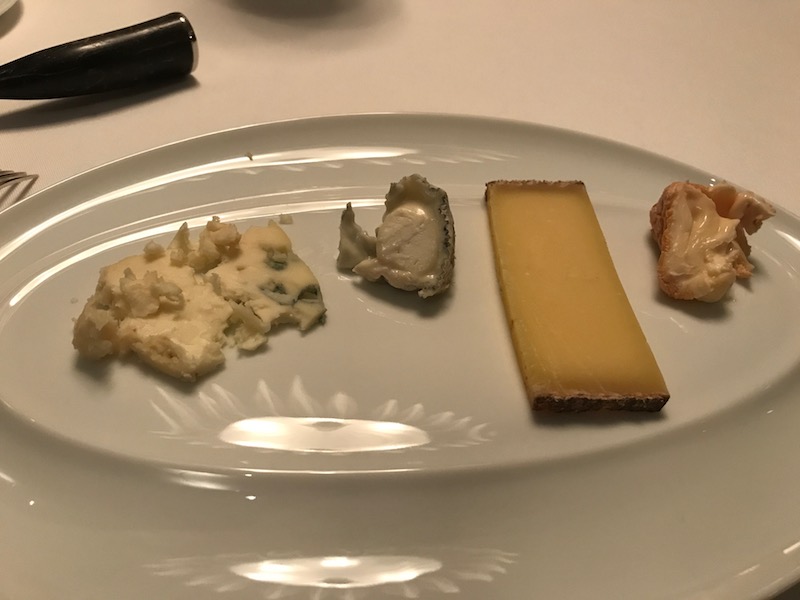

They also served a pre-dessert between the cheese and our selected dessert, which was almond creme and a crunchy chestnut tuille.

And of course, dessert! I went with a "Christmas" dessert, it seems. The dessert was inspired by black forest cake with chocolate and kirsch. The dessert is meant to look like 3 fir trees in the Black Forest, on a bed of green moss. The trees are made from dark chocolate with cream of vanilla and kirsch. Toms dessert had a sweet chesnut and Sudachi cream, with a absinthe and chestnut Chantilly cream, and a coconut, sweet chestnut and absinthe sorbet. Sudachi is a small, round, green citrus fruit that comes from either Peru or Japan, and is used only in cooking in place of lemon or lime. And of course, more petit-fours.
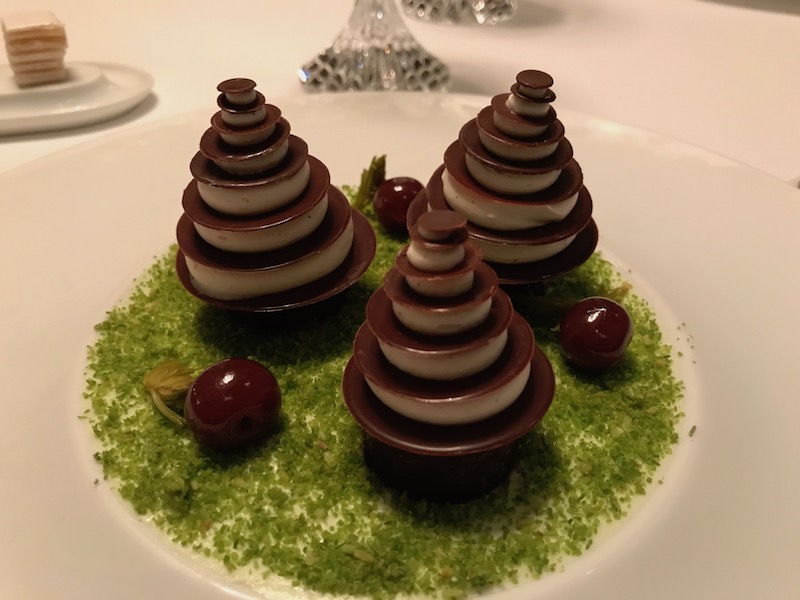
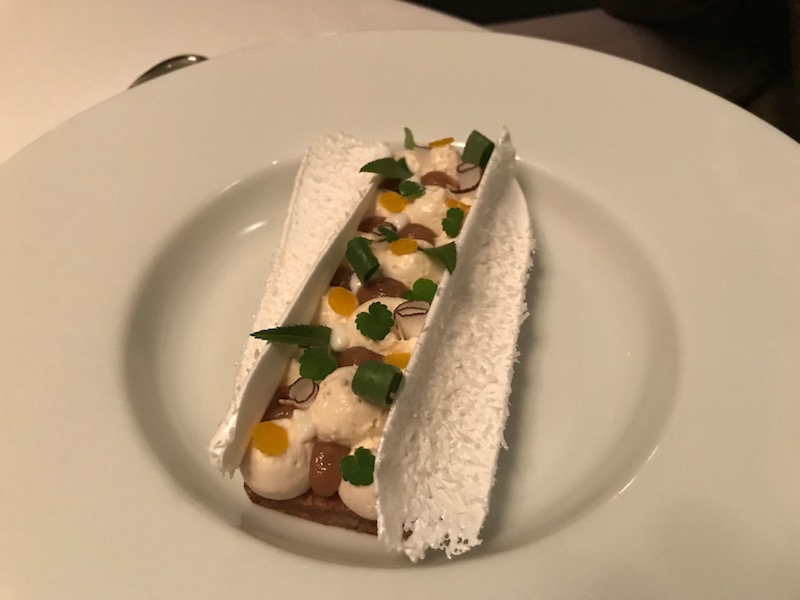
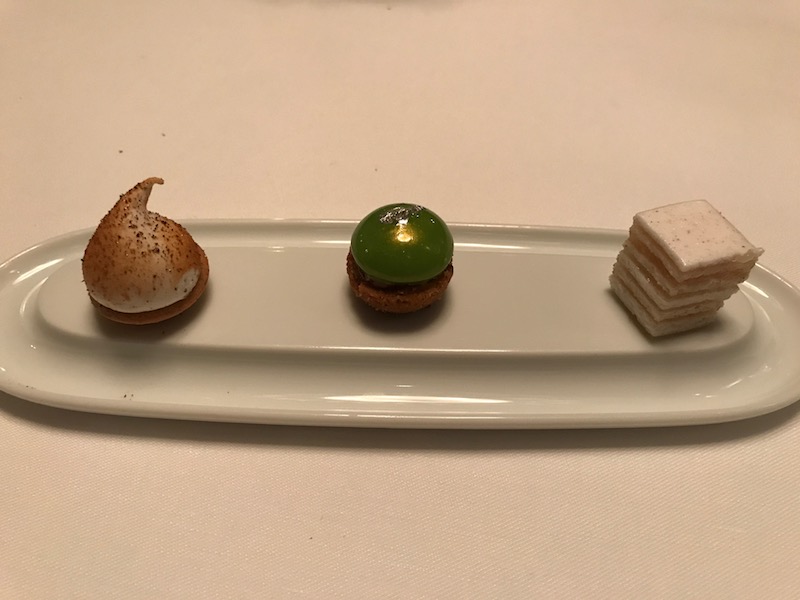
We had the choice of two different coffees (Brazilian and Ethiopian) and it came with some chocolate petit-fours.
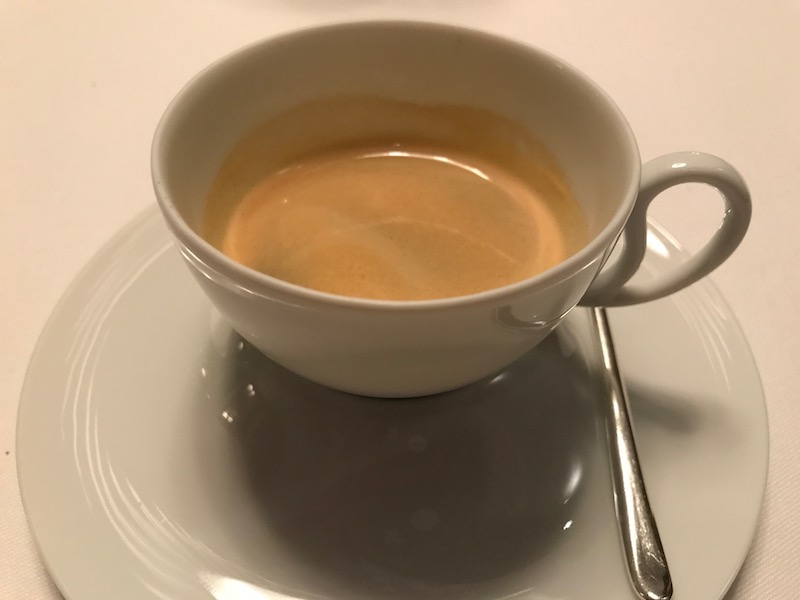
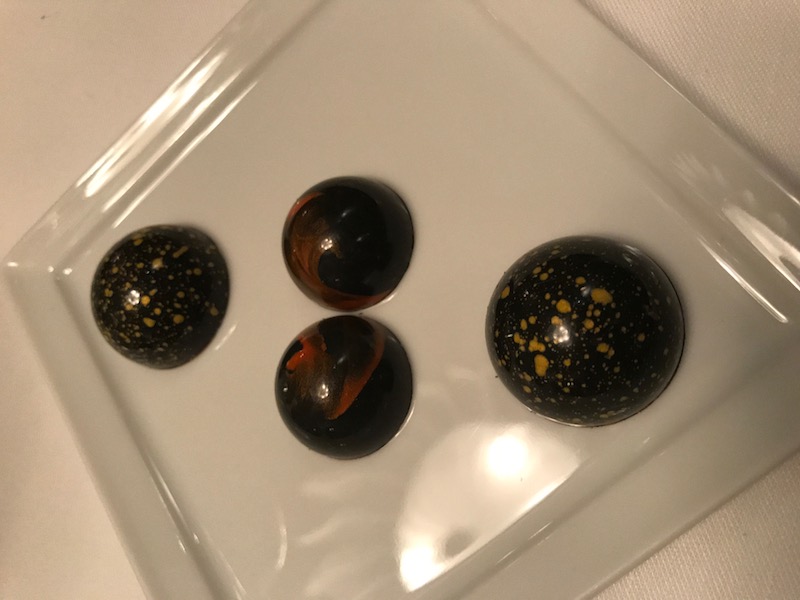
Since it was our birthdays, they brought out a birthday cake with two tall candles.
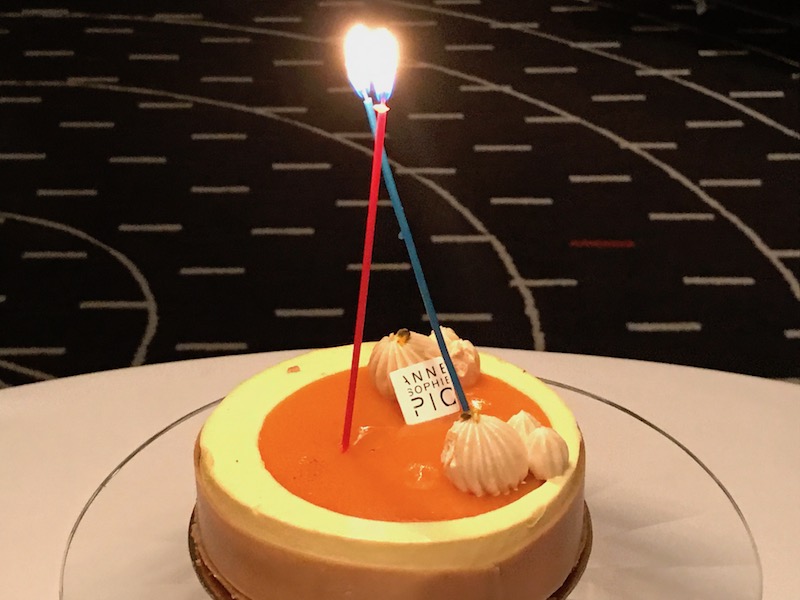
Pictures of both of us at dinner. Personally, I think Tom looks better than I do :-)


And here I am leaving (birthday cake in hand).
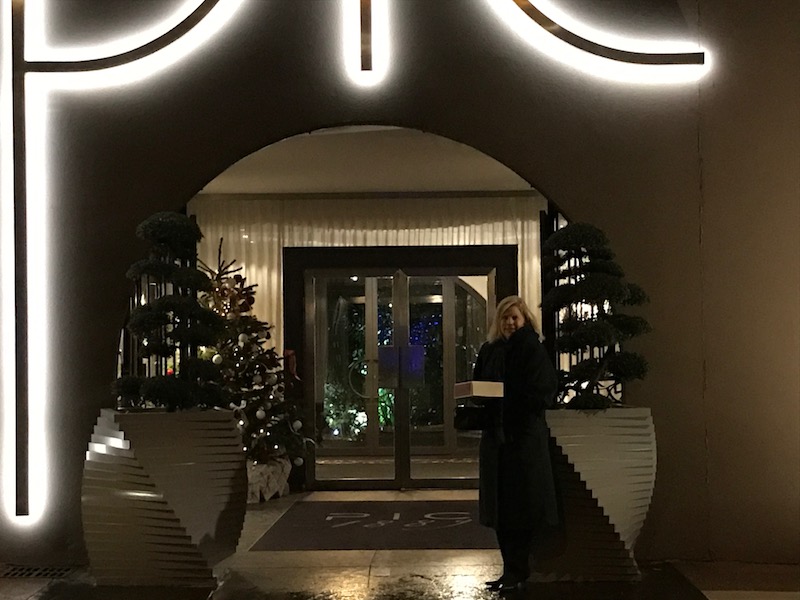
The next day, we headed back, but we decided to take a little detour to do some wine tasting in Chateauneuf-du-pape, which is known for it's red wines. It also has a very distinct soil ... specifically around the galets roulées, or round stones, which are everywhere in the vineyards. These stones help with drainage, but also play an important role in helping the grapes ripen by retaining the daytime heat and releasing it at night.


We did a little walk around town, which looks very much like a medieval village, with tiny little streets that wind here and there. This church probably dates from the end of the 11th century, when there was a Romanesque church here. We weren't able to actually walk around the church itself since it was closed up, but we could at least take a peek inside "lobby" area. There were actually some really nice stained-glass windows, as well as a nativity scene.
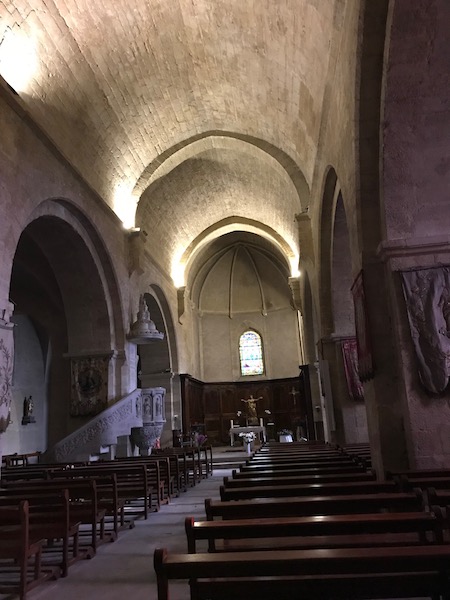
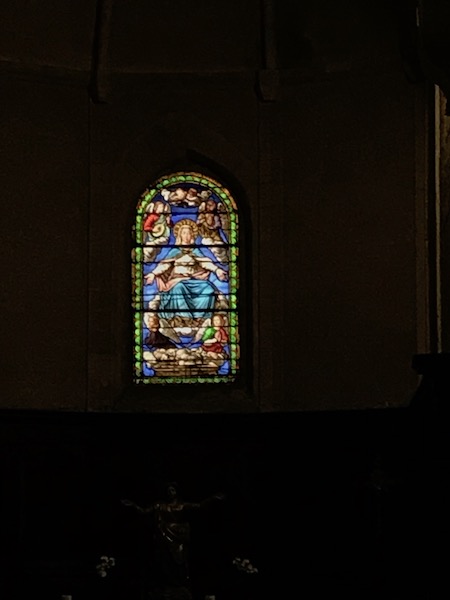
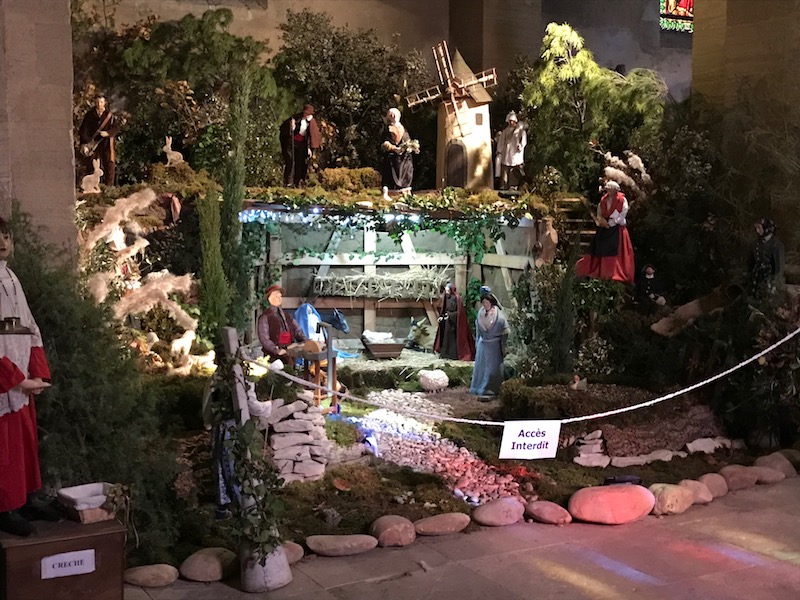
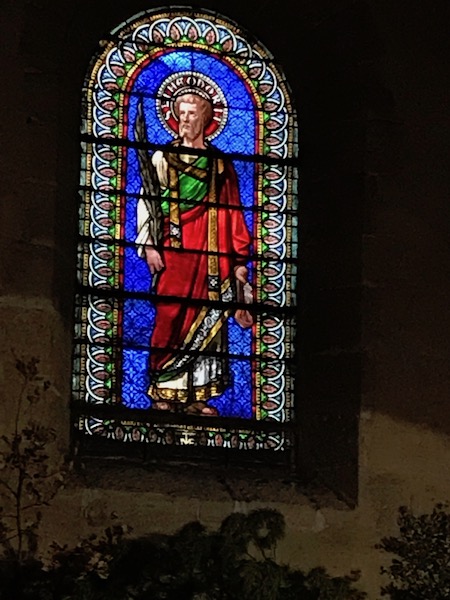
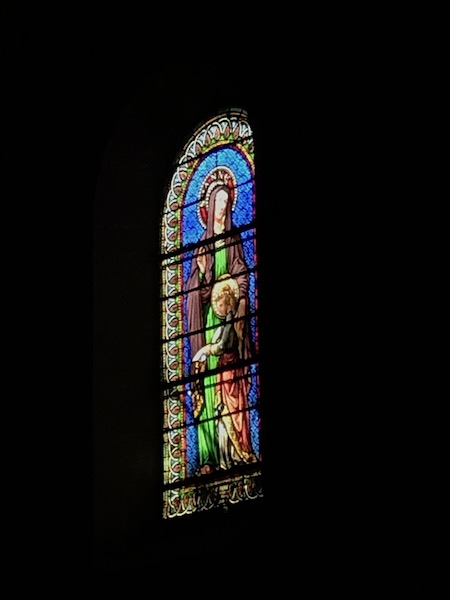
We were somewhat close to the Alps, and you could start seeing mountains with snowcaps on top.
